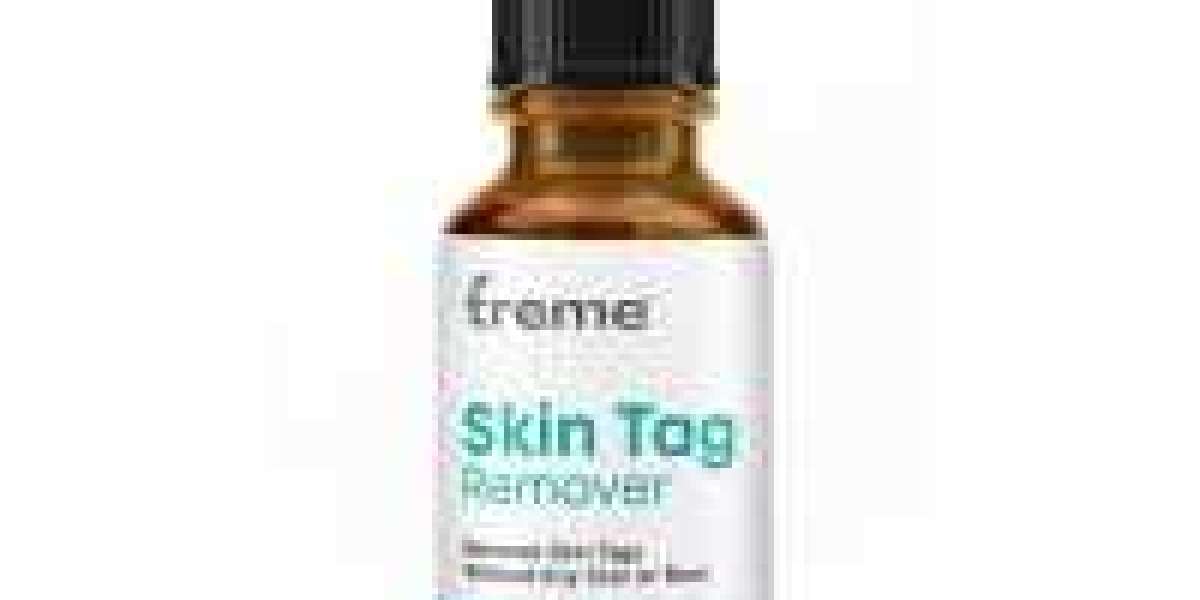In the journey for impeccable skin, numerous people wrestle with the presence of skin labels and moles. These normal skin annoyances frequently lead to reluctance and the longing for powerful arrangements. Enter Treme Skin Tag Remover, an item intended to target and dispense with these flaws delicately and successfully, all while promising a torment free encounter. With the ascent of normal cures that gloat less secondary effects than customary techniques, this item stands apart as a possible huge advantage. The market is overwhelmed with different medicines, yet Treme Skin Tag Remover intends to join viability with wellbeing, taking special care of the people who favor an all-regular way to deal with skincare.
➢ ➢ (Super Saving Offer) Click Here To Get Treme Skin Tag Remover Serum "USA" For The Lowest Price Right Now
What Is Treme Skin Tag Remover?
Treme Skin Tag Removal Serum is a skin treatment that tends to skin labels and moles. This item uses a one of a kind mix of normal fixings to advance protected and effective evacuation. Not at all like intrusive systems dermatologists offer, Treme Skin Tag Remover offers a helpful at-home arrangement that requires negligible exertion and time. The item is intended to be not difficult to apply and is bundled in an easy to use bottle, guaranteeing that people can utilize it really without requiring proficient guidance.Treme Skin Tag Remover is especially engaging for people looking for a non-careful choice, as it wipes out worries over torment, recuperation time, and potential scarring related with additional obtrusive methods. As clients look for comfort and adequacy, Treme Skin Tag Remover takes special care of this interest through its inventive way to deal with healthy skin. The double commitment of security and results positions it as an important competitor in the skincare market.
How Does Treme Skin Tag Remover work?
Treme Skin Tag Remover works by zeroing in on the start of the Treme Skin Tag Remover as well as fittingly drying it out, causing its not unexpected clearing. When applied to the Treme SkinTags, Moles Wart Remover, the solid condition of Treme SkinTags, Moles Wart Remover penetrates the locale and eliminates the blood supply to the Treme Skin Tag Remover. As needs be, the Treme Skin Tag Removal Serum ceaselessly runs out and eventually diminishes without leaving any scars or blemishes.The vivacious parts in Treme Skin Tag Remover work synergistically to advertise the drying out process.It is imperative to recall that the most well-known approach to discarding Treme Skin Tag Remover with could take some time, and moreover private outcomes could change. Assurance and moreover solid use are fundamental to achieving the best end result. Ordinary utilization of Treme Skin Tag Remover guarantees that the is gainfully centered around, offering an effortless and supportive answer for killing unwanted Treme Skin Tag Remover.
➢ ➢ (Super Saving Offer) Click Here To Get Treme Skin Tag Remover Serum "USA" For The Lowest Price Right Now
Advantages of Treme Tag Remover "Official Website":
- An inconspicuous methodology for disposing of skin marks is to utilize Treme Skin Tag Remover.
- The serum manages its business capably and doesn't hurt your skin or make it shudder or reply unexpectedly.
- An impressive number people have utilized what to dispose of skin names and moles.
- Treme Skin Tag Remover is made in the of America in a plant that is both FDA-and GMP-upheld.
- The decorations in Treme SkinTags, Moles Wart Remover Advantages are standard and have been displayed to work by science.
- You can utilize the cream to dispose of moles and skin names in a shielded manner.
- The two individuals with light and brown shading can utilize Treme Skin Tag Remover.
- Mark Remover is the name of a strong skin wellbeing the executives thing that works rapidly.
- Can be integrated into your regular skin wellbeing the board schedule.
- Exposes smoother and all the more clear skin.
- With these advantages, Treme Skin Tag Remover offers a reliable as well as really open choice for accomplishing skin free of Treme Skin Tag Remover.
➢ ➢ (Super Saving Offer) Click Here To Get Treme Skin Tag Remover Serum "USA" For The Lowest Price Right Now
Where To Purchase Treme Skin Tag Remover?
Treme Tag Remover "Official Website" can be helpfully bought through the authority site, guaranteeing clients get real items and limited time offers. Purchasing straightforwardly from the brand's site ensures customers admittance to the most recent arrangements and groups and the choice for problem free returns assuming they are unsatisfied with their purchase.Purchasing on the web likewise permits purchasers to investigate different bundle choices, including the serious evaluating levels that offer huge reserve funds.

.png)

%20buy.png)













